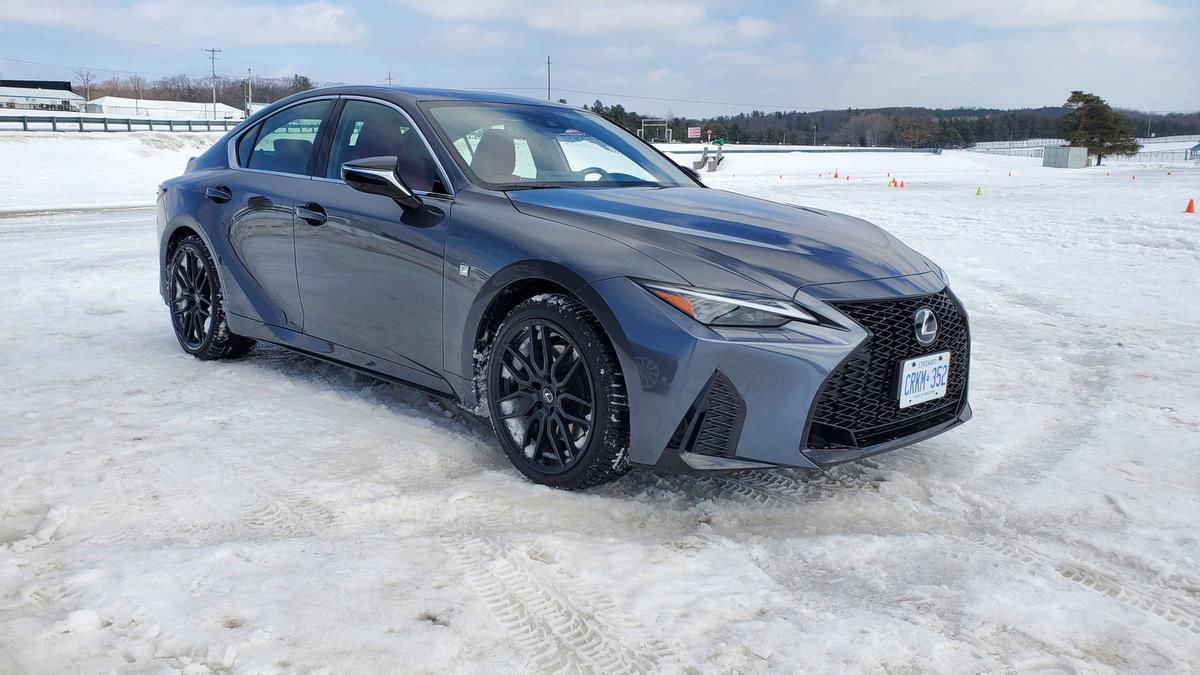[ad_1]
One of the best things about being an auto journalist in Canada, and there are many, is being able to participate in winter driving programs. The harsh conditions are challenging for both vehicle and driver and the experiences provide great opportunities to learn and improve one’s driving habits.
Last week, Lexus Canada invited a small group of auto journalists up to Canadian Tire Motorsport Park near Bowmanville, Ont., to sample some of its products in a snow-covered environment.
The selection of cars on hand for us to play in the snow were both gas and gas hybrid, many were all-wheel drive and just about all were fitted with Bridgestone Blizzak winter tires.
Despite being early March, outlying rural areas are still blanketed with a significant amount of snow. I didn’t take any measurements, but the snowpack at CTMP appeared to be anywhere from 10-15 centimetres which was plenty for a few fun exercises in the upper and lower paddock areas of the grand prix track.
Lexus set up three modules designed to test handling, braking and driving on snow and ice. I’ve been fortunate to participate in similar winter events both for auto and tire manufacturers before and I think most drivers would benefit from these activities if they felt so inclined. Being able to learn in controlled environments like this one can pay big dividends on our roads.
After spending about a half day putting various Lexus vehicles through their paces, a few observations come to mind.
First, the most important factor for driving in wintry conditions is a set of winter tires. All-wheel drive is helpful for traction and getting going if one becomes stuck, but all-around performance on ice and snow demands winter tires, it’s as simple as that.
During one exercise, a colleague and I “drag-raced†in a pair of sub-compact UX crossovers, one with a set of winter tires and one with all-seasons. We switched vehicles, and the one with winter tires won every time. Despite my best efforts, the all-season shod UX just couldn’t get enough grip to catch my colleague under acceleration, and I skidded past him when I applied the brakes at the end of the run. Winter tires are designed to operate at colder temperatures (7C or lower), and they have deeper tread patterns designed to bite into ice and snow. The shorter stopping distances alone make them well worth the investment.
Observation number two: stability / traction control is quite helpful for driving on snow-covered roads. In the handling exercise, the ES hybrid and RC coupe I drove were both outfitted with winter tires and are equipped with all-wheel drive. Over the course of several runs, I noticed less of difference between gas and hybrid performance, than I did when the traction control systems in both cars were turned off.
Now, I’ve been driving for more than 30 years, but nothing can make you feel like a noob quite like the absence of traction control on snow. I drove the course more aggressively to get a sense of the grip limits in both cars, and it didn’t take long to find it, especially in the RC, which uses a rear biased AWD system. It can provide a torque split of up to 50-50 front/rear, but it defaults to 30-70, and with no electronic nannies to efficiently route torque where it’s needed most to keep the car on track, losing control isn’t difficult. I didn’t swap ends in either car, but there was a lot of sideways driving. Things weren’t much better in the ES, which uses a front biased system. With the nannies off, it gets squirrely quickly too.
Lastly, I was reminded just how much fun driving in circles on a giant pad of snow with no threat of running into anyone or anything, save for a few traffic cones, can be.
I mention this because a few first gen IS models, circa 2001-02, were along for the ride. They’re used in a winter driving and racing program run by Russ Bond, a racer and well-known industry personality. If you’ve ever watched Motoring on TSN, you know who he is.
Anyway, Russ brought three of his battle-hardened IS racers to CTMP so we could contrast the new IS with its ancestor. All cars had studded tires, two were lowered and the one I drove had a racing seat and steering wheel. These cars are pretty stripped down on the inside but are still plated and road legal with stock engines and transmissions.
Driving a 20-year-old IS was one of the bumpiest experiences I’ve had in recent memory, but with snow flying everywhere and a roaring 2JZ engine, I had a blast. I did a ride-along with Russ, which was even harrier as we were turning laps against another car and things became competitive. There was no contact, but it was close. I put a 2021 IS through its paces on the same course, with traction control on and off, and had just as much fun, albeit in a more comfortable cockpit.
Loading…
Loading…Loading…Loading…Loading…Loading…
According to Lexus, 77 per cent of its sales in Canada in 2014 were AWD-equipped models, a figure that rose to 93 per cent in 2020. Not surprisingly, just about every Lexus sold here (except for the rear-driving RC F and LC) can be had with AWD.
Given our long, snowy winters, AWD makes sense. But make sure you also strap on a good set of winters on to your AWD ride. They’re what you need for staying out of snow banks and not sliding through intersections. These are good things, whether you drive a Lexus or not.
[ad_2]
Source by [author_name]





